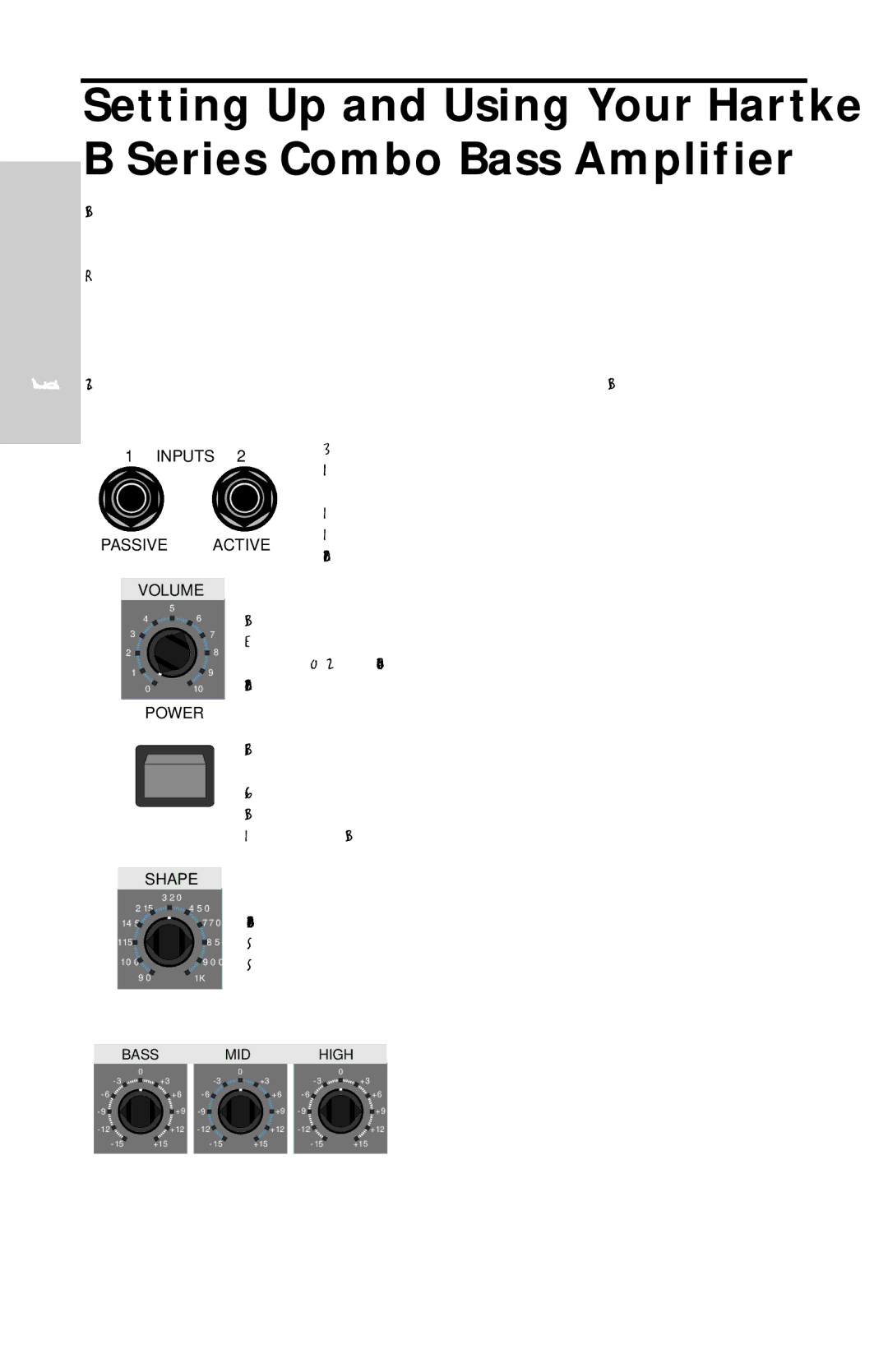
ENGLISH
Setting Up and Using Your Hartke B Series Combo Bass Amplifier
Setting up your Hartke Systems B Series Combo Bass Amplifier is a simple procedure which takes only a few minutes:
1.Remove all packing materials (save them in case of need for future service) and decide where the amplifier is to be physically placed. To avoid potential overheating problems, make sure that the rear panel is unobstructed and that there is good ventilation around the entire unit.
2.Connect the
1 INPUTS 2
PASSIVE ACTIVE
VOLUME
3.Use a standard music instrument cable to connect your bass to one of the Input jacks on the front panel. If your bass has passive electronics (that is, if it has no battery), connect it to Input 1, which is designed to handle low- voltage signals. If your bass has active electronics (that is, if it has a battery), connect it to Input 2, which has a 10 dB pad and is designed to handle hotter bass pickup signals.
| 5 |
| 4. On the front panel of the B Series, turn the Volume control to its |
4 | 6 |
| |
3 |
| 7 | minimum (fully counterclockwise) position, set all three EQ controls |
2 |
| 8 | |
| to their “0” (12 o’clock) position, and, if you are using a B60, B90 or | ||
1 |
| 9 | |
| B120, set the Shape control to its 12 o’clock position. | ||
0 | 10 |
| |
|
|
|
|
POWER
SHAPE
215 | 320 |
450 | |
145 | 770 |
115 | 850 |
100 | 900 |
90 | 1K |
5.Press the front panel Power switch in order to turn on your B Series amp; the LED in the switch will light up.
6.Set the output of your bass to maximum and then, while playing, slowly turn the B Series Volume control up until the desired level is achieved. It’s nearly impossible to overload the B Series amplifier, so if you hear distortion even at low Volume settings, check for a faulty cable (if it’s good, simply back off the output of your bass).
7.If you are using a B60, B90 or B120, turn the Shape knob both clockwise and counterclockwise to hear the effect of the Shape curve and filter on the sound of your bass. Leave the Shape knob at the point where it best complements your particular instrument and playing style.
BASS |
|
| MID |
|
| HIGH | 8. Adjust the three equalization controls to taste | |
| 0 |
|
| 0 |
| 0 | (when you get a great setting that complements | |
+3 |
| +3 |
| +3 | your instrument and playing style, it’s a good idea | |||
| +6 | +6 |
| +6 | ||||
| +9 | +9 |
| +9 | to write it down for future use). | |||
| +12 | +12 |
| +12 | ||||
|
|
| ||||||
+15 |
| +15 |
| +15 |
| |||
8
